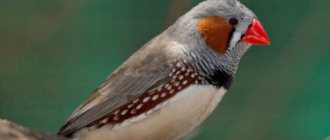- August 2, 2018
- Directions
- Valery Savelyev
The swallow is perhaps the most famous migratory or migratory bird in the entire world. Since ancient times, philosophers such as Aristotle and poets such as Becker have wondered where these birds migrate, symbolizing fidelity, maternal happiness and good luck in the home. Let's look at the question of where swallows spend the winter.
Swallows: description
Today it is known that there are up to 80 species of swallows and other representatives of this family. These birds are found in almost all corners of the globe where habitat conditions are suitable for them.
Interesting to know! Due to the unique structure of their body, swallows are considered quite maneuverable birds. During the flight, these birds are able to catch even the fastest insects.
The relatively wide mouth allows the swallow to feed directly in flight.
Appearance
Each species of swallow has some differences, although regardless of the variety, they have many similar features, such as:
- The plumage in the back area has a characteristic metallic tint.
- Wide chest.
- The beak is relatively short, but wide at the base.
- The mouth is quite large.
- It is not easy to distinguish a female from a male.
- The plumage fits tightly to the body.
- The claws are long and the fingers are quite tenacious.
- The plumage color of chicks is the same as that of adults.
Swallows are small birds with a small wingspan, while, compared to body length, the length of the wings is somewhat longer. The swallow's wingspan does not exceed 35 centimeters.
Interesting to know! The limbs of these birds are poorly adapted to moving on the ground. Therefore, if a bird walks on the ground, it does so clumsily, although sometimes circumstances arise that swallows have to fall to the ground.
Despite the fact that the swallow has relatively long wings, they are narrow, and the tail is more like a fork. As a rule, the swallow's back is black, and its belly is either white or light beige. The color of such birds also depends on the species characteristics and can be different.
Lifestyle and behavior
Swallows are very common migratory birds that prefer to be diurnal. They arrive somewhere in the middle of May and immediately begin building their nests. After this, they immediately begin to lay eggs.
The process of incubating the eggs takes another couple of weeks, and the chicks are fed for 3 weeks. By the time they fly to warmer climes, the young animals become completely independent.
The singing of a swallow cannot be called simple, since it makes sounds of different tones, reminiscent of the usual chirping of a bird, turning into a trill. Regardless of the species, swallows lead a social lifestyle, so they can form numerous groups.
Interesting to know! Basically, swallows settle near natural water sources. Here they find both building material for their nests and food.
You can often observe how a flock of swallows is located on power lines or on other hills. They also build nests in colonies (although not always), with each pair ready to defend its living space.
How long does a swallow live?
According to experts, swallows live on average about 4 years, although there have been ringed individuals that have already managed to live 8 years.
ALL ABOUT VILLAGE AND CITY SWALLOWS.
Caring for the chicks
The care of adults for the chicks comes down to heating them, constant feeding, cleaning the home from their feces, as well as repair and protection. Moreover, most often it has to be protected from swallows that have not yet managed to build their nests. In the first days of life, the chicks receive minimal portions of food, consisting exclusively of small insects.
During the first week after the chicks hatch, there are breaks in heating on the part of the parents, and later they completely stop warming the chicks during the day, concentrating exclusively on getting food. At the age of one week, the chicks sit during the day mostly with their heads raised, due to which the feeding procedure is significantly simplified. Chicks aged two weeks and older are characterized by pecking movements.
Types of swallows with photos
The most common types are:
Barn Swallow (Hirundo rustica)
This species is distinguished by its black dorsal area with a bluish tint. The wings are painted the same color, while the chest area and abdomen are distinguished by a whitish-pink tint. This type of swallow is popularly called “killer whale.” As a rule, for nesting sites they choose areas located near human habitation. They build nests under the roofs of both residential and non-residential buildings, as well as various outbuildings. They arrive after the end of the winter period, with the onset of spring warmth.
City swallow (Delichon urbicum)
This species differs from barn swallows in having a lighter belly. The city swallow, or "swallow" as it is popularly called, is more common in colder, northern regions.
Ground swallow
Or common swifts differ from the rest of their relatives in that they use earthen burrows dug on their own as nests. It should be noted that their life mainly takes place in flight. They descend to the ground to lay eggs and then feed their offspring.
Tree swallows (Tachycineta bicolor)
This species of swallow is characterized by the presence of very bright black plumage, with a very attractive purple tint.
The swallow swallows are the most interesting because they live exclusively within South America. This species of swallow is also interesting because the birds lead a sedentary lifestyle and do not fly anywhere, compared to many other species.
It is important to know! The purple wood swallow, which lives within North America, is considered the largest, since its body length is about 20 cm. Due to the fact that the chicks of this species have a purple color in their plumage by winter, this species received this name.
Antcatcher swallows primarily feed on colonies of tree ants, although their diet includes other insects in addition to ants. These swallows have quite strong and sturdy legs.
Lifestyle
Arrival in the spring is quite extended, most birds begin to arrive at the beginning of the greenery blooming, and the rest return only by the end of May. Previously, this species preferred to settle on rocks, but now their settlements can be found on stone buildings. In pursuit of prey, the funnel can reach speeds of up to 45 km/h, managing at this speed not only to feed, but also to quench its thirst. It flies over sources of water with its neck extended, thanks to which it manages to scoop it up with its beak.
In addition, during flight, they can take a complete swim several times, flying over the water. Swallows prefer not to descend directly to the ground, using mainly the tops of trees or wires to rest.
Natural habitats
Swallows are distinguished by the fact that they spend a lot of time in the air, expending a lot of energy and strength. Therefore, they need to constantly feed to replenish their energy reserves. Most species of swallows live in southern countries, which is due to the peculiarity of climatic conditions. In addition, in such climatic zones there is always enough food.
Interesting moment! Species living in warm countries are sedentary, while species living in temperate climate zones are migratory, flying to warm countries at the end of summer.
All representatives of the order “Passeriformes,” regardless of species, do not nest in the polar regions, as well as in the northern regions of the temperate zone. The main species diversity of swallows is distributed in Africa. Despite this, many of them are found on other continents. If we take the barn swallow into account, its habitat is quite wide, including both large and very small settlements.
What do swallows eat?
Regardless of the species, swallows primarily feed on flying insects. Even in non-flying weather conditions, these birds never replace this type of food with others, in the form of larvae or grass seeds. Therefore, during periods of lack of food, these birds suffer, and severely.
As a rule, the territory in which birds feed is located within a radius of 500 meters from the nest. Swallows easily catch their prey in open spaces, including river valleys, fields or mountain slopes.
The diet of swallows includes mosquitoes, midges, flies, various beetles, butterflies and dragonflies. When pressure rises, especially before rain, these birds' potential prey moves closer to the ground. In such weather, swallows fly close to the ground, so from these birds you can easily judge what kind of weather is expected in the near future.
Interesting to know! It is not always possible to judge the nature of the weather by paying attention to the altitude at which swallows fly. Quite often, even on fine evenings, swallows descend as close to the ground as possible, since the bulk of all kinds of insects are concentrated here.
Reproduction and offspring
It is believed that swallows are monogamous birds that form pairs once and for life. Despite this fact, there have been cases where males have been spotted near other nests.
These birds return to European territory around the end of April, beginning of May. In colder regions, this period occurs at the beginning of the summer month. Those species that live within the northern regions of Africa begin to form nests in late March, early April.
When in the natural environment, swallows build their nests in caves or limestone rocks. As a result of many years of observations, it has been established that there are pairs that join shore swallows and breed their offspring in abandoned burrows in coastal river zones.
As mentioned above, swallows are social birds that mainly live in colonies. Each colony can consist of several dozen or even hundreds of pairs of birds. At the same time, the birds make nests very close to each other, but this does not at all prevent them from all being in the same territory. Each pair spends up to 2 weeks building a nest.
Often the female arrives before the male and begins to build a nest for herself. After some time, the male arrives. After this, near the unfinished nest, they begin to take turns keeping watch while one of the family members is busy searching for building material.
Important point! City swallows, as a rule, build their nests within the city limits. The main places for such construction are buildings and structures, where swallows occupy places under the very roofs, under the eaves of windows, under bridges, and often even on river ferries.
A swallow builds a nest for itself in the form of a closed hemisphere. The building material is earth and bird saliva, which has an adhesive effect. In this case, the width of the nest is in the range of 115-125 mm, and its height is about 115 mm.
The swallow leaves a hole in the upper part for entering the nest. Often sparrows settle in the nests of swallows, then the swallows have to build new nests.
The inside of the nest is arranged so that future offspring are comfortable. It can be grass (dry), fluff or wool. After mating, the female lays up to 5 white eggs, measuring about 2x1.2 cm and weighing no more than 2 grams. The incubation process continues for 2 weeks, although sometimes longer, depending on weather conditions.
As a rule, the female incubates the eggs, and the male feeds her during this period. In rainy weather conditions, the female has to get food for herself.
Swallow chicks are so weak that parents have to break their shells to make it easier for them to be born. Within a month or a little earlier, these weak chicks begin to fly on their own, but for another week their parents continue to feed them.
Chick development
The duration of incubation depends on weather conditions and ranges from several weeks in good weather to a month in bad weather. Both parents are involved in incubation and further feeding of the young. The chicks stay in the nest for no more than three weeks. During this period, they manage to go through all stages of formation, become sighted and fledge, beginning to resemble adult birds as much as possible. At the end of the second week they already begin to fly out of the nest. At first, the swallow chick prefers to stay close to the nest, as the adults continue to feed it.
Only by autumn the young animals gather in flocks and begin, following the example of their parents, to lead a nomadic lifestyle, feeding independently until they fly away. In the fall, before flying to warmer climes, you can often see jackrabbits sitting on telegraph wires, wire fences, or flying high above fields and meadows. Since crowed birds are migratory birds, with the onset of the first cold weather you can see them flying to South Africa or southern Asia for the winter.
Natural enemies
Swallows are birds with excellent flight characteristics, so they are much more likely to avoid dangerous encounters with various predators. Of particular danger to them is the hobby falcon, which is characterized as a fast and agile predator that is capable of attacking swallows in the air.
Important point! Swallows become vulnerable to their enemies during the period of nest construction, when they fly up to bodies of water to find building material.
Feeding the chicks
During the period of feeding the chicks, funnels destroy a very impressive number of various insects. During the day, each parent flies up to the chicks with food about three hundred times. In addition, when feeding several broods over the summer, a pair of funnels catches about a million insects. The speed at which the chicks develop also depends largely on weather conditions. If there is not too much rainfall during the summer, it is not difficult for parents to provide them with the right amount of food, but if the weather is unfavorable, the chicks often have to starve. In the event of an early onset of cold weather, parents are forced to leave their chicks to die of hunger, going to warmer climes.











